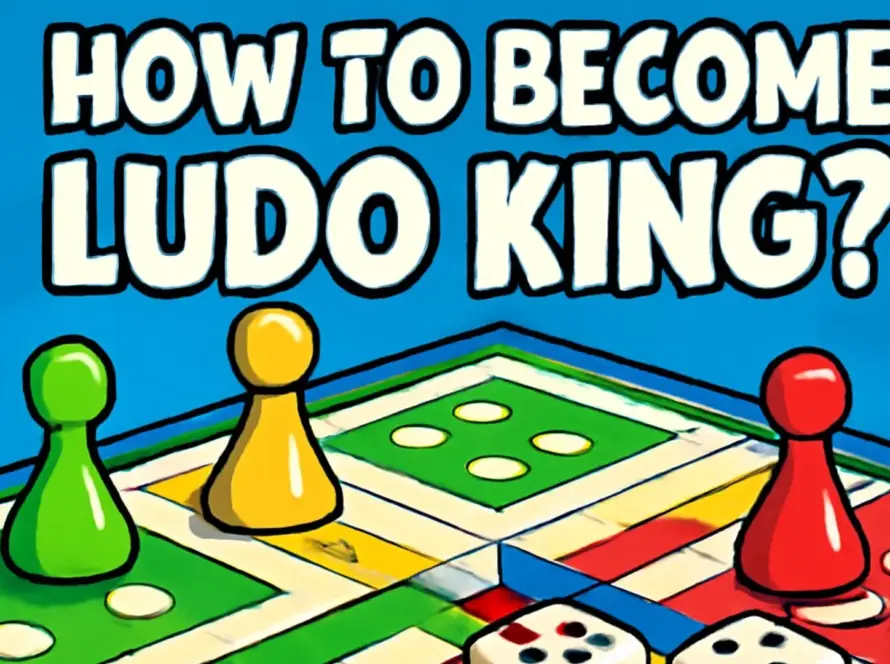Did you know Ludo has a royal past dating back over a thousand years? The history of Ludo is as colorful as the board itself—filled with kings, strategy, and cultural twists. What started as Pachisi in ancient India is now a household favorite, both offline and online.
Whether it’s a lazy Sunday or a train ride with friends, we all love to play Ludo online. In this blog, let’s roll the dice and trace how this timeless Indian game evolved into the digital sensation it is today.
Origin of Ludo: Where It All Began
Ludo may seem like a 20th-century game, but it’s not. The history of Ludo can be traced back to an ancient Indian game called Pachisi. Let’s go back in time and explore how this royal game turned into the Ludo we all love today.
The Ancient Indian Game Behind Ludo
The history of Ludo starts with Pachisi, a traditional game played in India as early as the 6th century. It was popular as “Game of Kings” and was famous amongst all, right from the King to the common men. In fact, artworks in the Ellora and Ajanta Caves show people playing this game, which proves how old and important it is.
In the great Indian epic, the Mahabharata, there’s a story where the Pandavas lose everything in a dice game (believed to be Pachisi). This shows that the game was more than just fun; it was also a symbol of fate, decision-making, and strategy.
The Mughal Emperor Akbar enjoyed the game too much. He constructed a giant-sized Pachisi board at his palace in Fatehpur Sikri and used real people as pieces! The game was not only entertaining but also helped in learning planning and leadership.
How Pachisi Was Played
Pachisi was played on a cloth board shaped like a cross, with four players sitting on each side. Instead of regular dice, players used cowrie shells to decide how many steps their pieces could move. The number of shells facing up told them how far to go.
The goal was to move all your pieces from the starting point to the center of the board. But it wasn’t that simple—opponents could block or capture your pieces. This made the game exciting and required both luck and smart thinking.
Compared to Ludo, Pachisi had more complex rules and needed more planning. That’s why it was popular among royals who enjoyed its mix of skill and strategy.
How the British Created Ludo from Pachisi
In the 19th century, when the British ruled India, they discovered Pachisi and found it very interesting. They liked the game but wanted to make it simpler. So, they changed some rules, made the board and pieces easier to understand, and added dice instead of shells.
In 1896, a British man named Alfred Collier officially patented the modern version of the game in England and named it ‘Royal Ludo.’ He also added a dice cup to the game. This new version was easy to learn and fun to play, so it quickly became popular in many countries.
Ludo was played by British soldiers during World War I, and as the British traveled across the world, they took the game with them. Today, Ludo is known by different names in different places, like Parcheesi in Spain and the US, Mensch ärgere Dich nicht in Germany, and Ludu in parts of Africa. Even though the name and look changed, the heart of the game stayed the same!
Ludo Rules We All Know
We’ve all played Ludo at some point, be it with cousins during summer holidays or during long train journeys. Still, let’s quickly go over the basic rules that make the game what it is.
Each player picks a color (red, blue, green, or yellow) and gets four tokens. The goal? Move all your tokens from the starting point to the center of the board before anyone else.
- To bring a token into play, you need to roll a 6.
- Turns move clockwise, and you roll the die once every turn.
- If your token lands on a square where another player’s token is sitting, you capture it—they go back to their base and have to roll a 6 to re-enter.
- Safe zones (marked with a star or special symbol) protect your token from being captured.
- To reach the home triangle, you must roll the exact number—no shortcuts allowed!
The first player to bring all four tokens to the center wins the game. It’s a fun mix of luck (rolling the die) and smart moves (deciding which piece to move).
How Pocket Ludo Redefines Ludo for the Digital Age
[Convert this image into a square or rectangle shape and use here] [Alt text: Pocket Ludo dashboard]
We all love the classic game of Ludo, but what if you could enjoy the same fun and earn real money while playing? That’s where Pocket Ludo changes the game.
With Pocket Ludo, the old-school charm meets exciting new features:
- Easy Sign-Up: Just register with your mobile number or email and jump right into the game.
- Play & Earn: Buy game coins and use your strategy. If you win, those coins can be redeemed as real money directly to your Paytm or UPI account.
- Play with Friends: Create a table, share the code on WhatsApp, and enjoy friendly battles with your gang—even if they’re miles away.
- Quick Moves: The game comes with a timer, so every move counts. Quick thinking can give you the upper hand.
- Win with Strategy: Reach the center with all four tokens to win—just like the classic game, but now with real rewards.
Pocket Ludo keeps the original game spirit alive while adding a competitive edge and rewarding experience. Whether it’s fun with family or a chance to test your skills and earn, it’s all packed into one smart app.
Conclusion
Ludo has always been a game of fun, strategy, and memories. Whether it’s a casual match with family or a competitive round with friends, the excitement never fades.
With Pocket Ludo, the game gets even better. You still enjoy the classic rules, but now, with exciting features like online play, fast moves, and the chance to earn real money.
So, if you’re ready to take your Ludo skills to the next level, Pocket Ludo is the way to go. Play smart, win big, and relive the fun!

